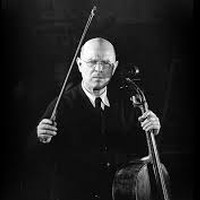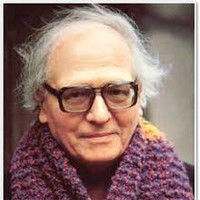Haydn’s Lark Quartet





The composer Olivier Messiaen was serving in the French military in 1940 when he was captured amid the Nazi invasion. He was transferred to a prisoner-of-war camp in Silesia known as Stalag VIIIA, where among his fellow inmates he found accomplished musicians who played violin, clarinet and cello. With the help of a sympathetic guard, Messiaen obtained paper, a pencil and a quiet space in which to compose, and he even convinced his captors to bring in an upright piano so that he could perform with his colleagues. On January 15, 1941, the motley quartet performed Messiaen’s newest work for a rapt audience of prisoners and guards alike in a frigid, unheated barrack.
The work first heard on that extraordinary day was Quatuor pour la fin du temps, or Quartet for the End of Time. The title came from a passage in Chapter 10 of the Book of Revelation, in which a “mighty angel … cried in a loud voice … that there should be time no longer.” Messiaen was a devoted Catholic, and music was a prime vehicle for his faith and mystical worldview. He was also a birdsong collector, a student of the modes and rhythms of Eastern music, a synaesthete (meaning that his brain mingled sensory inputs of sound and color), and a composer and organist with the finest training from the Paris Conservatoire — all of which can be heard and felt in Quartet for the End of Time.
The quartet consists of eight disparate yet interrelated movements. In a preface to the published score, Messiaen gave a detailed account of each movement’s origins and meanings:
I. Liturgy of Crystal. Between three and four in the morning, the awakening of birds: a solo blackbird or nightingale improvises, surrounded by a shimmer of sound, by a halo of trills lost very high in the trees. Transpose this onto a religious plane and you have the harmonious silence of Heaven.
II. Vocalise, for the Angel who announces the end of Time. The first and third parts (very short) evoke the power of this mighty angel, a rainbow upon his head and clothed with a cloud, who sets one foot on the sea and one foot on the earth. In the middle section are the impalpable harmonies of heaven. In the piano, sweet cascades of blue-orange chords, enclosing in their distant chimes the almost plainchant song of the violin and cello.
III. Abyss of the birds. Clarinet alone. The abyss is Time with its sadness, its weariness. The birds are the opposite to Time; they are our desire for light, for stars, for rainbows, and for jubilant songs.
IV. Interlude. Scherzo, of a more individual character than the other movements, but linked to them nevertheless by certain melodic recollections.
V. Praise to the Eternity of Jesus. Jesus is considered here as the Word. A broad phrase, “infinitely slow,” on the cello, magnifies with love and reverence the eternity of the Word, powerful and gentle, “whose time never runs out.” The melody stretches majestically into a kind of gentle, regal distance. “In the beginning was the Word, and Word was with God, and the Word was God.”
VI. Dance of fury, for the seven trumpets. Rhythmically, the most characteristic piece of the series. The four instruments in unison imitate gongs and trumpets (the first six trumpets of the Apocalypse followed by various disasters, the trumpet of the seventh angel announcing consummation of the mystery of God). Use of added values, of augmented or diminished rhythms, of non-retrogradable rhythms. Music of stone, formidable granite sound; irresistible movement of steel, huge blocks of purple rage, icy drunkenness. Hear especially all the terrible fortissimo of the augmentation of the theme and changes of register of its different notes, towards the end of the piece.
VII. Tangle of rainbows, for the Angel who announces the end of Time. Recurring here are certain passages from the second movement. The angel appears in full force, especially the rainbow that covers him (the rainbow, symbol of peace, wisdom, and all luminescent and sonorous vibration). In my dreams, I hear and see ordered chords and melodies, known colors and shapes; then, after this transitional stage, I pass through the unreal and suffer, with ecstasy, a tournament; a roundabout compenetration of superhuman sounds and colors. These swords of fire, this blue-orange lava, these sudden stars: there is the tangle, there are the rainbows!
VIII. Praise to the Immortality of Jesus. Large violin solo, counterpart to the violoncello solo of the fifth movement. Why this second eulogy? It is especially aimed at second aspect of Jesus, Jesus the Man, the Word made flesh, immortally risen for our communication of his life. It is all love. Its slow ascent to the acutely extreme is the ascent of man to his god, the child of God to his Father, the being made divine towards Paradise.
Messiaen once wrote that he endeavored to create “a true music, that is to say, spiritual, a music which may be an act of faith; a music which may touch upon all subjects without ceasing to touch upon God; an original music, in short, whose language may open a few doors, yet take down distant stars.” If any music fulfills this creed, it surely is Quartet for the End of Time.
Aaron Grad ©2022
Get driving directions and find nearby parking.
Find dining options close to the venue.
View seating charts to find out where you'll be seating.
Get driving directions and find nearby parking.
Find dining options close to the venue.
View seating charts to find out where you'll be seating.
